| View previous topic :: View next topic |
| Author |
Message |
poilu

Joined: 26 Aug 2007
Posts: 10472
Location: Greece
Expire: 2019-08-29
|
 Posted: Fri Jan 11, 2008 9:14 pm Post subject: Best slide scanner Posted: Fri Jan 11, 2008 9:14 pm Post subject: Best slide scanner |
 |
|
poilu wrote:
What is the best scanner for slide ?
The Nikon 9000 ED

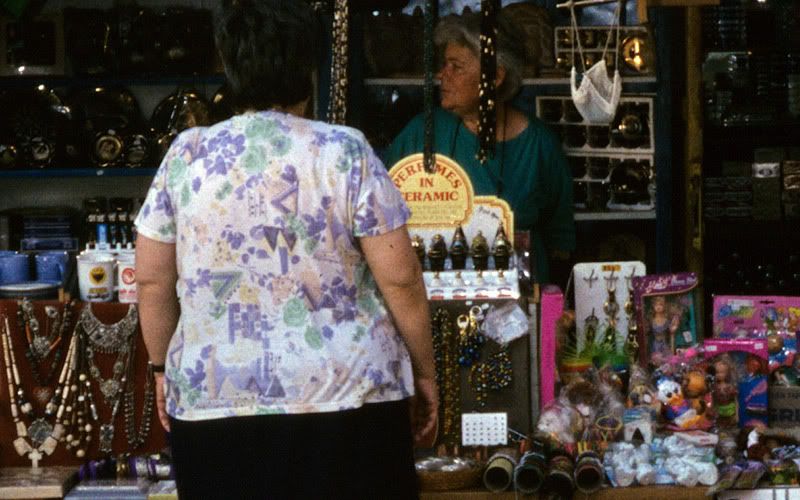
or the Helios 44-2
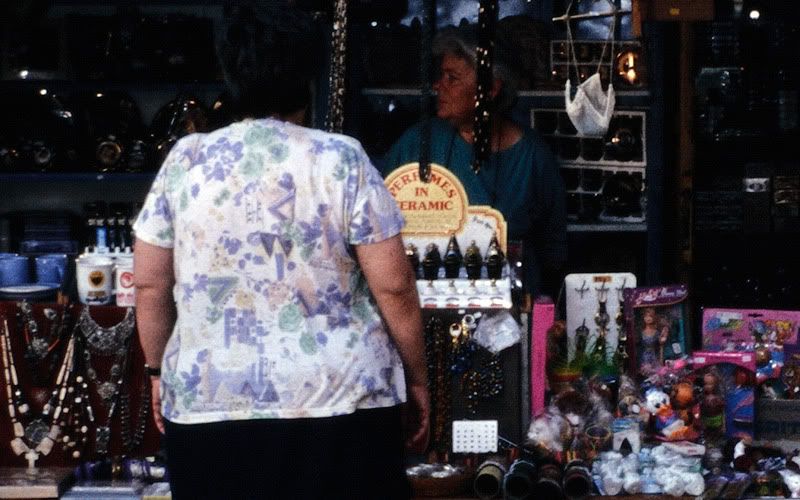
full slide
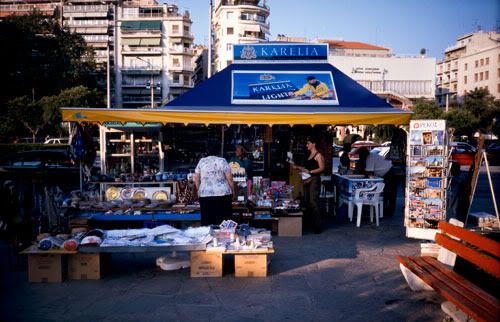
I pay 5 euros the Helios & I think it is better for the price 
_________________
T* |
|
| Back to top |
|
 |
Orio

Joined: 24 Feb 2007
Posts: 29545
Location: West Emilia
Expire: 2012-12-04
|
 Posted: Fri Jan 11, 2008 9:37 pm Post subject: Posted: Fri Jan 11, 2008 9:37 pm Post subject: |
 |
|
Orio wrote:
Yes, absolutely, especially considering that you can take two photos with the helios, and combine them with Photoshop expanding the dynamic range.
_________________
Orio, Administrator
T*
NE CEDE MALIS AUDENTIOR ITO
Ferrania film is reborn! http://www.filmferrania.it/
Support the Ornano film chemicals company and help them survive!
http://forum.mflenses.com/ornano-chemical-products-t55525.html |
|
| Back to top |
|
 |
Laurence


Joined: 26 Mar 2007
Posts: 4809
Location: Western Washington State
Expire: 2016-06-19
|
 Posted: Fri Jan 11, 2008 9:47 pm Post subject: Posted: Fri Jan 11, 2008 9:47 pm Post subject: |
 |
|
Laurence wrote:
Hello poilu! I don't quite understand...the Nikon 9000 scan is at top...the scan of an image from the Helios is at bottom. But both are scans, correct? So, I guess I am confused about how to compare...

_________________
Assent, and you are sane;
Demur,—you ’re straightway dangerous,
And handled with a chain.
Emily Dickinson
Cameras and Lenses in Use:
Yashica Mat 124 w/ Yashinon 80/3.5,
CV Apo-Lanthar 90/3.5SL, (Thank you Klaus),
Pentax 645,
Flek 50,
Pentax-A 150
Pentax-A 120 Macro
Voigtlander Vitomatic I w/Color Skopar 50/2.8
Konica TC and zoom lenses (thanks Carsten)
Contax AX
Yashica ML 50/2
Yashica ML 35/2.8
Carl Zeiss Contax 50/1.4
Tamron Adaptall SP 17/3.5
Tamron Adaptall 28/2.5
Tamron Adaptall SP 300/2.8 LD (IF)
|
|
| Back to top |
|
 |
montecarlo


Joined: 04 Apr 2007
Posts: 1865
Location: Romania
|
 Posted: Fri Jan 11, 2008 10:01 pm Post subject: Posted: Fri Jan 11, 2008 10:01 pm Post subject: |
 |
|
montecarlo wrote:
I think the Helios one means that the slide was in fact photographed (with the Helios on the camera), may be using some device (slide duplicator, bellows, etc..). Just guessing.
_________________
Canonet QL17 III
Zenit E , Helios-44 58mm f:2.0 , Tair-11A 135mm f:2.8, Jupiter-9 85mm f:2.0,
Carl Zeiss Jena Flektogon 35mm f:2.4
Pentax MX, ME Super, Chinon CE4/CM4, Petri MC 28mm f:2, smc Pentax-M 50mm f:1.7, Soligor T 135mm f:2.8
Minolta X500, Tokina 28/2.8, Rokkor 50/1.7, 80-205/4.5
Nikon D90, Nikkor 35/2.0, Nikkor 50/1.8, Sigma 24/2.8, Nikkor 18-105 VR |
|
| Back to top |
|
 |
poilu

Joined: 26 Aug 2007
Posts: 10472
Location: Greece
Expire: 2019-08-29
|
 Posted: Fri Jan 11, 2008 10:06 pm Post subject: Posted: Fri Jan 11, 2008 10:06 pm Post subject: |
 |
|
poilu wrote:
| Orio wrote: |
| especially considering that you can take two photos with the helios, and combine them with Photoshop expanding the dynamic range |
True, look with combine 3 exposure
Nikon 9000 ED on left
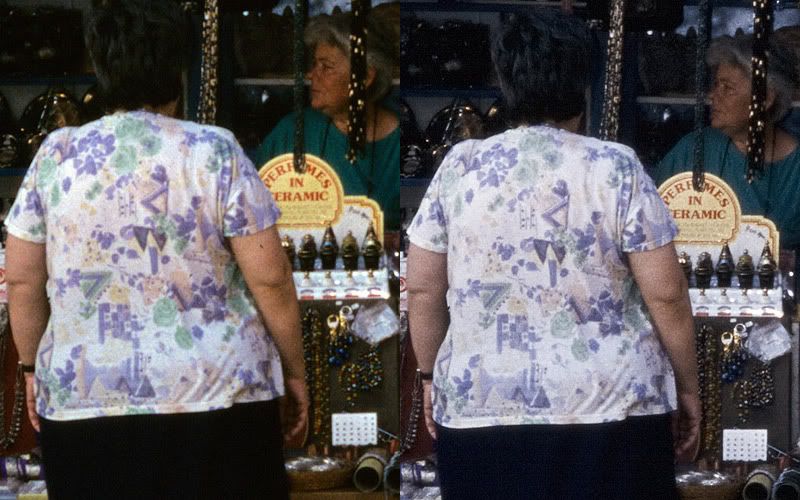
It's help the colors but not so much dynamic
Normal image left, hdr right
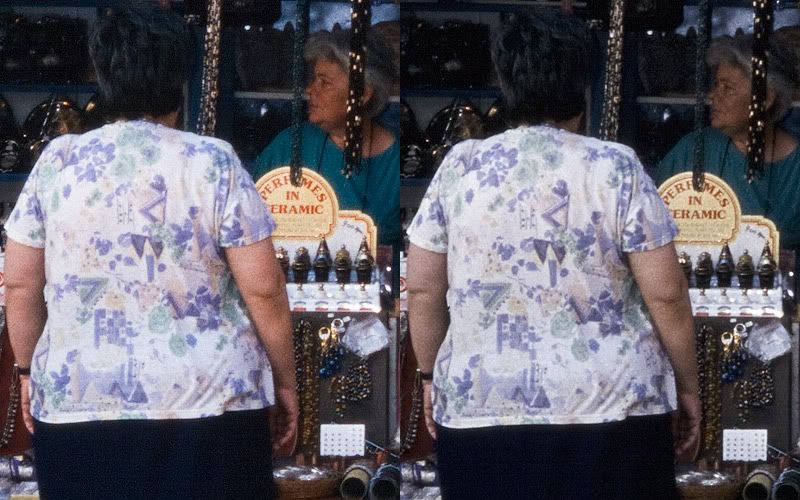
p.s: Ok this one is not the helios but a 'better' lens 
_________________
T* |
|
| Back to top |
|
 |
poilu

Joined: 26 Aug 2007
Posts: 10472
Location: Greece
Expire: 2019-08-29
|
 Posted: Fri Jan 11, 2008 10:42 pm Post subject: Posted: Fri Jan 11, 2008 10:42 pm Post subject: |
 |
|
poilu wrote:
| Laurence wrote: |
So, I guess I am confused about how to compare...
|
Like Cosmin say, I take a photo of the slide with my canon 400D
I have a bellow with a slide adapter. The scan is fast : 1/250s
I took this slide 10 years ago, it's a sensia2
_________________
T* |
|
| Back to top |
|
 |
Laurence


Joined: 26 Mar 2007
Posts: 4809
Location: Western Washington State
Expire: 2016-06-19
|
 Posted: Sat Jan 12, 2008 4:28 am Post subject: Posted: Sat Jan 12, 2008 4:28 am Post subject: |
 |
|
Laurence wrote:
I see! Thank you for the explanation! Yes, that would be a FAST scan!
Regarding the first set, with the Helios comparing to the Nikon scanner - WOW! Very close in quality to each other!
You have me thinking now, as I have many slides.
_________________
Assent, and you are sane;
Demur,—you ’re straightway dangerous,
And handled with a chain.
Emily Dickinson
Cameras and Lenses in Use:
Yashica Mat 124 w/ Yashinon 80/3.5,
CV Apo-Lanthar 90/3.5SL, (Thank you Klaus),
Pentax 645,
Flek 50,
Pentax-A 150
Pentax-A 120 Macro
Voigtlander Vitomatic I w/Color Skopar 50/2.8
Konica TC and zoom lenses (thanks Carsten)
Contax AX
Yashica ML 50/2
Yashica ML 35/2.8
Carl Zeiss Contax 50/1.4
Tamron Adaptall SP 17/3.5
Tamron Adaptall 28/2.5
Tamron Adaptall SP 300/2.8 LD (IF)
|
|
| Back to top |
|
 |
Orio

Joined: 24 Feb 2007
Posts: 29545
Location: West Emilia
Expire: 2012-12-04
|
 Posted: Sat Jan 12, 2008 4:47 am Post subject: Posted: Sat Jan 12, 2008 4:47 am Post subject: |
 |
|
Orio wrote:
The key is taking advantage of the digital technology.
Until film, duplicating slides with photographs was really unsatisfactory: you had to spend a fortune in special low contrast film, and even then, the result was ofter a loss of a huge amount of detail.
Scanning, is surely better, but it's a lenghty process, and it requires also costly hardware to obtain quality results.
On the contrary, with a bellows rail and a macro lens, one can make two different raw shoots of a slide, one for the highlights the other for the shadows, and combine them in the RAW editing program - or in photoshop.
The lazy ones can even shoot directly in JPG and let plugins such as Fred Miranda's to handle the merging work (no need to layers and masks).
And voilŕ, suddenly the dynamic range of the slide is doubled - probably even father what the original slide could provide!
And as poilu mentioned - scanning times are, well, unbeatable.
-
_________________
Orio, Administrator
T*
NE CEDE MALIS AUDENTIOR ITO
Ferrania film is reborn! http://www.filmferrania.it/
Support the Ornano film chemicals company and help them survive!
http://forum.mflenses.com/ornano-chemical-products-t55525.html |
|
| Back to top |
|
 |
Laurence


Joined: 26 Mar 2007
Posts: 4809
Location: Western Washington State
Expire: 2016-06-19
|
 Posted: Sat Jan 12, 2008 6:55 am Post subject: Posted: Sat Jan 12, 2008 6:55 am Post subject: |
 |
|
Laurence wrote:
| Orio wrote: |
The key is taking advantage of the digital technology.
Until film, duplicating slides with photographs was really unsatisfactory: you had to spend a fortune in special low contrast film, and even then, the result was ofter a loss of a huge amount of detail.
Scanning, is surely better, but it's a lenghty process, and it requires also costly hardware to obtain quality results.
On the contrary, with a bellows rail and a macro lens, one can make two different raw shoots of a slide, one for the highlights the other for the shadows, and combine them in the RAW editing program - or in photoshop.
The lazy ones can even shoot directly in JPG and let plugins such as Fred Miranda's to handle the merging work (no need to layers and masks).
And voilŕ, suddenly the dynamic range of the slide is doubled - probably even father what the original slide could provide!
And as poilu mentioned - scanning times are, well, unbeatable.
- |
One difficulty I have encountered with the flatbed scanner is alignment of multiple slide images in Photoshop. The alignment is contingent upon manual placement of the slides in the holders, and if you are off by even a small amount, they won't register together. Of course, in Photoshop, I can take the steps to align them, but it takes up valuable time for me.
I find this method interesting in that I would have no troubles with the registration of the slides. Having well over 5000 slides, I can surmise that this method is very quick - insert a slide, take the shot, remove the slide - probably in less than 30 seconds! Correct?
I assume that the backlight is from the sky? Or is there a preferred light source? I suppose that white balance could be adjusted if using artificial light.
_________________
Assent, and you are sane;
Demur,—you ’re straightway dangerous,
And handled with a chain.
Emily Dickinson
Cameras and Lenses in Use:
Yashica Mat 124 w/ Yashinon 80/3.5,
CV Apo-Lanthar 90/3.5SL, (Thank you Klaus),
Pentax 645,
Flek 50,
Pentax-A 150
Pentax-A 120 Macro
Voigtlander Vitomatic I w/Color Skopar 50/2.8
Konica TC and zoom lenses (thanks Carsten)
Contax AX
Yashica ML 50/2
Yashica ML 35/2.8
Carl Zeiss Contax 50/1.4
Tamron Adaptall SP 17/3.5
Tamron Adaptall 28/2.5
Tamron Adaptall SP 300/2.8 LD (IF)
|
|
| Back to top |
|
 |
poilu

Joined: 26 Aug 2007
Posts: 10472
Location: Greece
Expire: 2019-08-29
|
 Posted: Sat Jan 12, 2008 8:35 am Post subject: Posted: Sat Jan 12, 2008 8:35 am Post subject: |
 |
|
poilu wrote:
| Laurence wrote: |
| insert a slide, take the shot, remove the slide - probably in less than 30 seconds |
If the slide is mounted you can go faster than 30 seconds
Otherwise you have to align the roll horizontally.
First you must have a dslr! You could photograph the slide on a light table or use a bellow. For the bellow you can use whatever light source even led. If you work in AV the dslr will find the exposure. I used flash.
The setup is long because you have to mount dslr, align magnification to slide and fine focus (for manual lenses). If the viewfinder have 97% you will get a larger area that what you seen. Live view would be better as you get what you see.
Of course if someone have to scan 50 slides the setup time doesn't matter.
If photographing slide was so easy you would find a lot of reference on the web. On every discussion in other forum folks says the result are not good enough. I am surprised of the result vs a good film scanner considering the AA filter, the 12 bit resolution and 8 bit for red.
In the past I made some test vs my polaroid sprintscan 35+ and I had soft border and chromatic aberration problems with non macro lenses. Now with ebay we can easily find cheap & good macro lens.
The helios have good border at F11. Of course better lens have higher resolution, better edge and more dynamic in the shadows
_________________
T* |
|
| Back to top |
|
 |
Orio

Joined: 24 Feb 2007
Posts: 29545
Location: West Emilia
Expire: 2012-12-04
|
 Posted: Sat Jan 12, 2008 10:02 am Post subject: Posted: Sat Jan 12, 2008 10:02 am Post subject: |
 |
|
Orio wrote:
| Laurence wrote: |
I find this method interesting in that I would have no troubles with the registration of the slides. Having well over 5000 slides, I can surmise that this method is very quick - insert a slide, take the shot, remove the slide - probably in less than 30 seconds! Correct? |
Yes. You have to make a calibration once, at the beginning. I suggest to shoot a slide of a newspaper page. You load it and calibrate the focusing and framing for it. Then you're done. Of course framing may vary slightly as you load slides manually. But just like scanning, you'll have to do some cropping.
I assume that the backlight is from the sky? Or is there a preferred light source? I suppose that white balance could be adjusted if using artificial light.[/quote]
That was a pain... with film 
Today it's easy: use whatever light source you prefer as long as it is constant. Just don't use sodium lamps  Shoot a photo with loader empty: you'll photograph the loader itself which is opalescent white. If you are really obsessed, put a piece of white paper inside sized as a slide. Ok, now make a custom white calibration on the image, and keep it. You are set. Shoot a photo with loader empty: you'll photograph the loader itself which is opalescent white. If you are really obsessed, put a piece of white paper inside sized as a slide. Ok, now make a custom white calibration on the image, and keep it. You are set.
Really with digital technology this has become a most viable and fast way to shoot slides. Also the contrast - the main enemy during film days - is completely controllable. Only real limitation is you'll be limited by the resolution of your camera. But if you are REALLY obsessed by a slide, you can augment enlargement and shoot it in parts and stitch it.  Of course this is nonsense, normal scanning would be faster. But it's still a possibility Of course this is nonsense, normal scanning would be faster. But it's still a possibility 
_________________
Orio, Administrator
T*
NE CEDE MALIS AUDENTIOR ITO
Ferrania film is reborn! http://www.filmferrania.it/
Support the Ornano film chemicals company and help them survive!
http://forum.mflenses.com/ornano-chemical-products-t55525.html |
|
| Back to top |
|
 |
Orio

Joined: 24 Feb 2007
Posts: 29545
Location: West Emilia
Expire: 2012-12-04
|
 Posted: Sat Jan 12, 2008 10:04 am Post subject: Posted: Sat Jan 12, 2008 10:04 am Post subject: |
 |
|
Orio wrote:
| poilu wrote: |
In the past I made some test vs my polaroid sprintscan 35+ and I had soft border and chromatic aberration problems with non macro lenses. Now with ebay we can easily find cheap & good macro lens.
The helios have good border at F11. Of course better lens have higher resolution, better edge and more dynamic in the shadows |
Of course you need a macro lens for that. Or a very controlled normal lens such as a Contax lens.
_________________
Orio, Administrator
T*
NE CEDE MALIS AUDENTIOR ITO
Ferrania film is reborn! http://www.filmferrania.it/
Support the Ornano film chemicals company and help them survive!
http://forum.mflenses.com/ornano-chemical-products-t55525.html |
|
| Back to top |
|
 |
LucisPictor


Joined: 26 Feb 2007
Posts: 17633
Location: Oberhessen, Germany / Maidstone ('95-'96)
Expire: 2013-12-03
|
 Posted: Sat Jan 12, 2008 10:14 am Post subject: Posted: Sat Jan 12, 2008 10:14 am Post subject: |
 |
|
LucisPictor wrote:
You just need to make sure that you get the whole slide on your digital photo.
Some of the slide duplicators were made for the FoV of a 35mm cam, so these will crop the copied picture.
_________________
Personal forum activity on pause every now and again (due to job obligations)!
Carsten, former Moderator 
Things ON SALE
Carsten = "KAPCTEH" = "Karusutenu" | T-shirt?.........................My photos from Emilia: http://www.schouler.net/emilia/emilia2011.html
My gear: http://retrocameracs.wordpress.com/ausrustung/
Old list: http://forum.mflenses.com/viewtopic.php?t=65 (Not up-to-date, sorry!) | http://www.lucispictor.de | http://www.alensaweek.wordpress.com |
http://www.retrocamera.de |
|
| Back to top |
|
 |
naplam


Joined: 22 Mar 2007
Posts: 469
Location: Spain
Expire: 2013-11-30
|
 Posted: Sat Jul 19, 2008 6:50 pm Post subject: Posted: Sat Jul 19, 2008 6:50 pm Post subject: |
 |
|
naplam wrote:
I did a quick test photographing a slide, with an AF macro zoom. I didn't care much about the sharpness, i did the test handheld but I found out the camera couldn't capture the colours i was seeing in the slide. I mean, the colours in this photo have nothing to do with what you can see in the slide, the slide is so much better... It's not that they're "wrong", red is red, green is green, but there are lots of different tones in the slide while the digital photo is quite "flat" color-wise, it's like it's just "red" "pink" and "black" there. The lamp i used is maybe not totally white but i was seeing something quite better with my eyes with that light than what the digital camera managed to capture.
 |
|
| Back to top |
|
 |
A G Photography


Joined: 11 May 2008
Posts: 1480
Location: Bologna - Italy
|
 Posted: Sat Jul 19, 2008 7:03 pm Post subject: Posted: Sat Jul 19, 2008 7:03 pm Post subject: |
 |
|
A G Photography wrote:
| Orio wrote: |
| poilu wrote: |
In the past I made some test vs my polaroid sprintscan 35+ and I had soft border and chromatic aberration problems with non macro lenses. Now with ebay we can easily find cheap & good macro lens.
The helios have good border at F11. Of course better lens have higher resolution, better edge and more dynamic in the shadows |
Of course you need a macro lens for that. Or a very controlled normal lens such as a Contax lens. |
If you want to follow that path use an enlarger lens on the bellow, something like the Rodenstock Rodagon or the Nikkor EL.
Thay have far better planariety than any SRL lens, even macro, that are studied to mess with 3d objects.
_________________
Alessandro
My Photography Website
My Blog about Photography and Italian Cuisine
My Photostream on Flickr
--------------------------------------------------------
DSLR: Nikon d80, Olympus e410
SLR: Chinon CX, Fujica ST605n, Nikon f601, Pentacon FM, Pentax Spotmatic SPII, Praktica FX, Praktica FX2, Voigtlander VST1, Yashica FX-3, Zeiss Contaflex
RF: Altissa Altix, Zorki Ie, Kiev 4b
Medium Format: Pentacon Six TL, Zeiss Ikonta 520/2, Mockba 4, Voigtlander Bessa I, Agfa Isolette II, Agfa Isola
Large Format: Cambo SC 4x5, Rodenstock Sinaron 150/5.6, Rodenstock Rodagon 150/5.6, Schneider Kreuznach Symmar 180/5.6
Lenses
Nikkors: 28/3.5 AIS, 35/2, 50/1.8, 50/2 H, Micro 55/3.5, Micro 60/2.8, 85/1.8, 135/3.5 AI, 200/4 NAI, 18-55/3.5-5.6, 28-80/3.5-5.6, 55-200/4-5.6
CY: Distagon 28/2.8, Planar 50/1.4, Yashika 50/1.7, Sonnar 135/2.8
CZJ m42-Exakta: Flektogon 20/4, Flektogon 35/2.8, Tessar 40/4.5, Tessar 50/2.8, Pancolar 50/1.8, Pancolar 50/2, Biotar 58/2, Biotar 75/1.5, Tessar 80/2.8, Sonnar 135/3.5, Sonnar 135/4, Triotar 135/4
CZJ P6: Flektogon 50/4, Flektogon 65/2.8, Biometar 80/2.8, Biometar 120/2.8, Sonnar 180/2.8
Meyer-Pentacon: Orestegon 29/2.8, Pentacon 29/2.8, Lydith 30/3.5, Primagon 35/4.5, Helioplan 40/4.5, Domiplan 50/2.8, Primotar 50/3.5, Oreston 50/1.8, Primoplan 58/1.9, Orestor 100/2.8, Trioplan 100/2.8, Helioplan 135/4.5, Orestor 135/2.8, Pentacon 135/2.8, Primotar 135/3.5, Primotar 180/3.5, Telemegor 180/5.5, Orestegor 200/4, Pentacon 200/4, Orestegor 300/4, Telemegor 300/4.5, Telemegor 400/5.5
Schneider-Kreuznach: Curtagon 28/4, Curtagon 35/2.8, Xenon 50/1.9, Xenar 50/2.8, Tele Xenar 135/3.5, Tele Xenar 200/4
Russians: Arsat Zodiak 30/3.5, Mir-I 37/2.8, Volna-9 50/2.8, Industar-50 50/3.5, Industar-61 50/2.8, Helios 44 58/2, Helios 44-2 58/2, Helios 44-M-4 58/2, Volna-3 80/2.8, Helios 40 85/1.5, Jupiter 9 85/2, Jupiter 11 135/4
Others: Chinon-Tomioka 55/1.4, Helios 28/2.8, Isco Iscotar 50/2.8, Konica Hexanon 40/1.8, Ludwig Meritar 50/2.9, Schacht Travegon 35/3.5, Schacht Travenon 135/4.5, Sekor 55/1.8, Sigma MF 28/2.8, S-Takumar, 28/3.5, S-Takumar 50/1.4, S-Takumar 55/1.8, S-Takumar 55/2, Steinheil Quinar 135/2.8, Steinheil Culminar 135/4.5, Vivitar 135/2.8, Voigtlander Ultron 50/1.8, Yashica Yashinon DX 50/1.4, Zuiko MC Auto-W 28/2.8
|
|
| Back to top |
|
 |
poilu

Joined: 26 Aug 2007
Posts: 10472
Location: Greece
Expire: 2019-08-29
|
 Posted: Sat Jul 19, 2008 8:50 pm Post subject: Posted: Sat Jul 19, 2008 8:50 pm Post subject: |
 |
|
poilu wrote:
| naplam wrote: |
| the colours in this photo have nothing to do with what you can see in the slide |
In the comparison with the Nikon 9000, the method gave about the same colors.
To obtain the perfection of slide, better sensor are probably needed but I doubt that any flat scanner could do better.
This scan was with the 400D, I am sure that with the 40D the color is better and on every new generation even better.
Also a strong flash is helpful to get daylight balance and better exposure control.
Alessandro advice is also important, Rodenstock and good lens have better color balance and micro contrast than a AF zoom 
_________________
T* |
|
| Back to top |
|
 |
Orio

Joined: 24 Feb 2007
Posts: 29545
Location: West Emilia
Expire: 2012-12-04
|
 Posted: Sat Jul 19, 2008 9:40 pm Post subject: Posted: Sat Jul 19, 2008 9:40 pm Post subject: |
 |
|
Orio wrote:
| A G Photography wrote: |
If you want to follow that path use an enlarger lens on the bellow, something like the Rodenstock Rodagon |
A Rodagon seems an excellent idea to me.
_________________
Orio, Administrator
T*
NE CEDE MALIS AUDENTIOR ITO
Ferrania film is reborn! http://www.filmferrania.it/
Support the Ornano film chemicals company and help them survive!
http://forum.mflenses.com/ornano-chemical-products-t55525.html |
|
| Back to top |
|
 |
naplam


Joined: 22 Mar 2007
Posts: 469
Location: Spain
Expire: 2013-11-30
|
 Posted: Sun Jul 20, 2008 8:01 am Post subject: Posted: Sun Jul 20, 2008 8:01 am Post subject: |
 |
|
naplam wrote:
Ok Poilu, I'll try to repeat the test with a flash and a better lens. |
|
| Back to top |
|
 |
Laurence


Joined: 26 Mar 2007
Posts: 4809
Location: Western Washington State
Expire: 2016-06-19
|
 Posted: Sun Jul 20, 2008 7:10 pm Post subject: Posted: Sun Jul 20, 2008 7:10 pm Post subject: |
 |
|
Laurence wrote:
I'm intrigued! I have many 35mm slides that I haven't scanned. My V700 does "okay", but doesn't compare to a dedicated 35mm scanner, in my estimation.
What would be a good basis for a macro lens to use with a slide-scanning bellows? In other words, what characteristics would I need to look for? Simply that the lens is sharp, or other factors?
_________________
Assent, and you are sane;
Demur,—you ’re straightway dangerous,
And handled with a chain.
Emily Dickinson
Cameras and Lenses in Use:
Yashica Mat 124 w/ Yashinon 80/3.5,
CV Apo-Lanthar 90/3.5SL, (Thank you Klaus),
Pentax 645,
Flek 50,
Pentax-A 150
Pentax-A 120 Macro
Voigtlander Vitomatic I w/Color Skopar 50/2.8
Konica TC and zoom lenses (thanks Carsten)
Contax AX
Yashica ML 50/2
Yashica ML 35/2.8
Carl Zeiss Contax 50/1.4
Tamron Adaptall SP 17/3.5
Tamron Adaptall 28/2.5
Tamron Adaptall SP 300/2.8 LD (IF)
|
|
| Back to top |
|
 |
|
|
